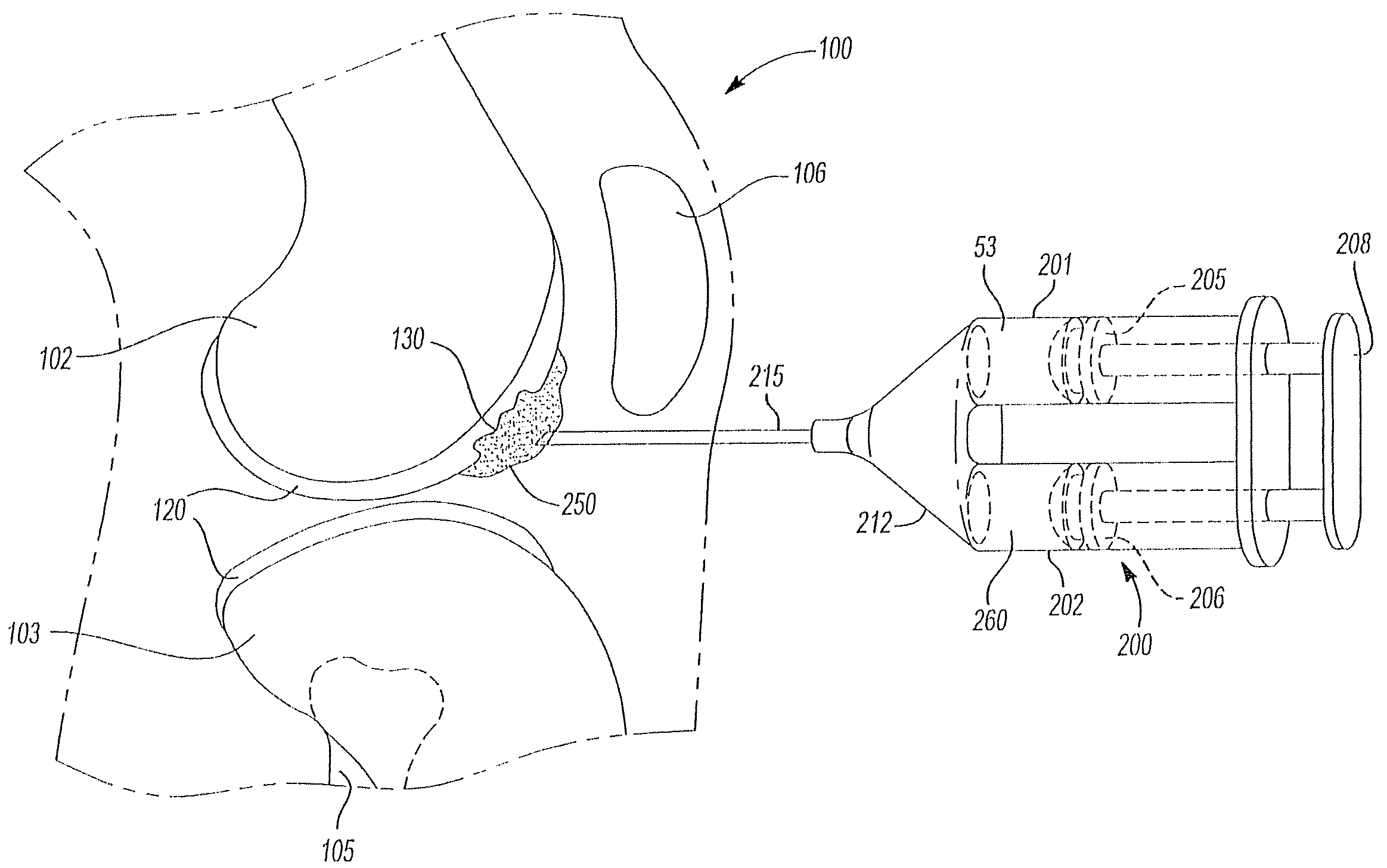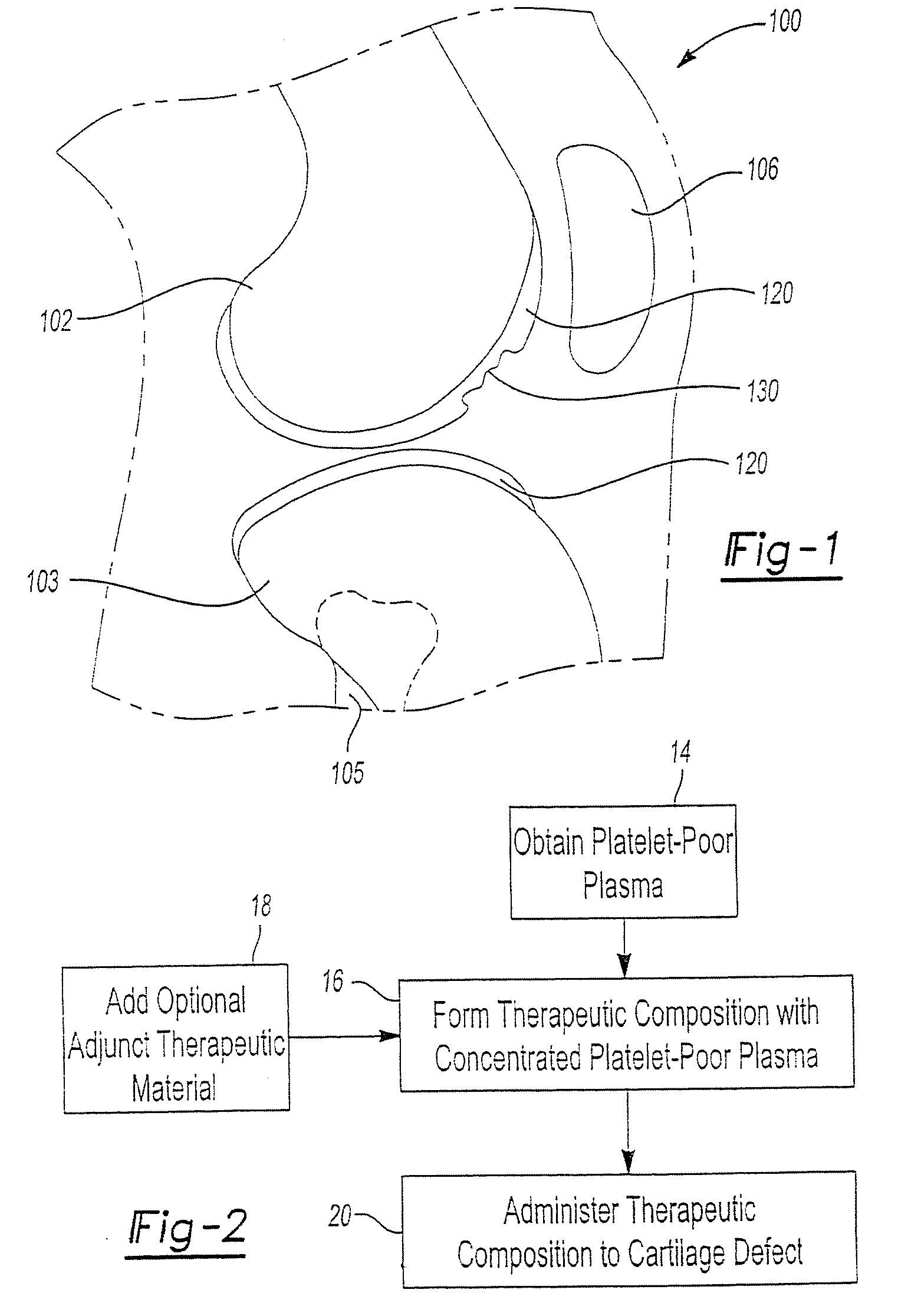Method and device for repair of cartilage defects
a cartilage defect and cartilage technology, applied in the field of cartilage defect repair methods, compositions, devices, etc., can solve the problems of wear, trauma or disease, deterioration of the joint surface, and inability to move people,
- Summary
- Abstract
- Description
- Claims
- Application Information
AI Technical Summary
Benefits of technology
Problems solved by technology
Method used
Image
Examples
Embodiment Construction
[0013]The following description of technology is merely exemplary in nature of the subject matter, manufacture, and use of one or more inventions, and is not intended to limit the scope, application, or uses of any specific invention claimed in this application or in such other applications as may be filed claiming priority to this application, or patents issuing therefrom.
[0014]FIG. 1 is an example of a cartilage defect 130 in a human subject 100. The cartilage defect 130 is in a knee which comprises a femur 102, a tibia 103, a fibula 105, a patella 106, and cartilage 120. It should be understood, however, that the cartilage defect may be in any joint of a human subject 100 or animal subject, including shoulders, elbows, wrists, ankles, hips, and the spinal column, in which cartilage tissue is inadequate for physiological or cosmetic purposes. In this regard, cartilage defects include congenital cartilage defects, cartilage defects that result from or are symptomatic of disease, di...
PUM
 Login to View More
Login to View More Abstract
Description
Claims
Application Information
 Login to View More
Login to View More - R&D
- Intellectual Property
- Life Sciences
- Materials
- Tech Scout
- Unparalleled Data Quality
- Higher Quality Content
- 60% Fewer Hallucinations
Browse by: Latest US Patents, China's latest patents, Technical Efficacy Thesaurus, Application Domain, Technology Topic, Popular Technical Reports.
© 2025 PatSnap. All rights reserved.Legal|Privacy policy|Modern Slavery Act Transparency Statement|Sitemap|About US| Contact US: help@patsnap.com



